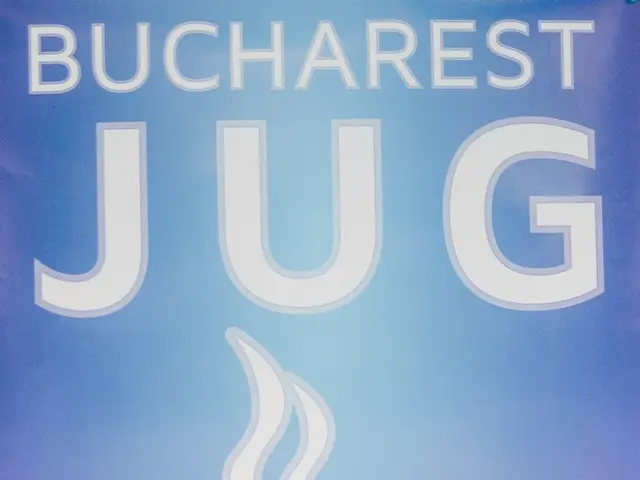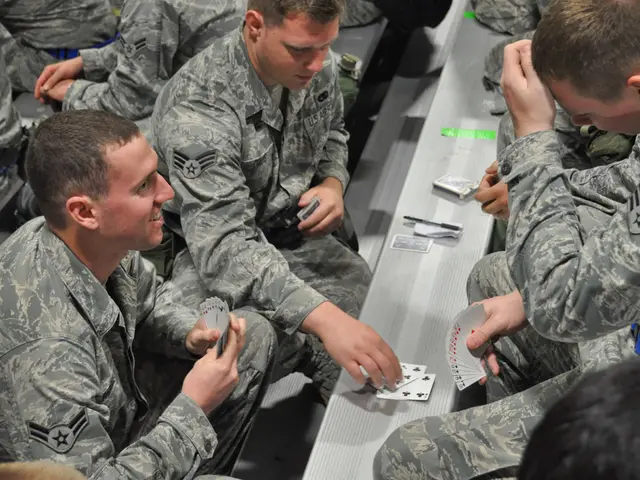Undercover gambling cons bilking players out of winnings in live games
Marked Cards: A Persistent Threat in Card Games
Marked cards are playing cards bearing distinct markings on their reverse sides, which are employed by unscrupulous players to gain an advantage through deception.
The "marks" here encompass both conventional card design and specially applied symbols, customized to aid the cheat's ability to discern an opponent's cards. Given the non-identical backs of these cards, even a casual observer's attention can help identify an adversary's cards, thereby securing a win.
Traditional Card Marking Techniques
Cheats have historically resorted to various methods for marking cards:
- "Scratch": A nearly imperceptible damage is inflicted on cards, resulting in roughness. Important cards such as aces, kings, or tens may display roughness on one side while others show it on the other; this enables the Cheat to determine the consistency of the cards during shuffling.
- Poking: The most commonly used method of card marking, employing a needle or pin to make almost undetectable dots on the corners. The pattern of these dots indicates the suit and value of the cards.
- Melted Wax: Card corners are dipped in molten wax, creating a recognizable mark for the cheat.
- Side Mark: Markings are made not on the card surface but on its side. This allows the cheat to arrange the cards as desired through indentations.
- Eraser Mark: A rudimentary cheating method in which the glossy surface of cards is rubbed with an eraser in specific spots.
Modern Card Marking Technologies
The impact of technology across various sectors has driven cheats to embrace modern approaches for playing marked cards.
- Infrared Marked Cards: Infrared-sensitive materials coating these cards form marks that are invisible to the naked eye but become visible under special devices, like glasses or contact lenses. Though these marks can be detected by experienced cheats with the aid of high-speed cameras and an earpiece.
Irrespective of the brand, such as Bicycle, Modiano, KEM, Bee, Dal Negro, Fournier, Aviator, or others, IR marked cards are often hand-marked.
- Ultraviolet Marked Cards: Markers used by cheaters apply dots that are invisible and undetectable under normal light but become ultraviolet sources. These cards are commonly branded as "ultra-luminous cards" or "luminous cards."
Detecting Marked Cards
Given the persistence of marked cards in casinos, it is imperative to spot and prevent their usage.
- Monitoring all players carefully to identify suspicious behavior is vital. Check the condition of used cards for visible damage.
- If your suspicions linger despite a clear check, attempt to discreetly ascertain if the player wears contact lenses, and determine where they store the solution for marking cards.
- Keep in mind that only a minuscule amount of solution is required, enough to make a thick layer on an object, which can then be gradually removed with a finger. Incidents have occurred wherein cheaters have applied the solution to various items, such as eyeglass frames, buttons, cigarette packs, and beer bottles.
- Remain vigilant for the possibility of multiple professionals working together, where a suspect may prove to be a mere decoy while the real culprits remain concealed.
- To detect marks on cards, the quick shuffle test may be applied to catch selected patterns on card backs.
- If marks have been applied to the cards using a solution, observe them from a different angle to spot any changes in how light reflects off the cards.
- Alcohol-based solutions often fade quickly, causing the cards to change color slightly.
- By carefully feeling the surface of the cards before playing, mechanical marks can be detected.
- Infrared or ultraviolet marks require a special flashlight or glasses for detection. In some cases, only a laboratory examination can ensure the identification of professional marks.
In conclusion, modern technology advancements, like infrared and ultraviolet marking methods, have considerably augmented the potential for cheating in card games. Casinos must prioritize implementing stringent security measures to maintain fair play, including the use of UV and infrared light detectors, vigilant monitoring, and trained security personnel. These measures help ensure the game's integrity and prevent sophisticated cheating methods.
What if someone uses infrared or ultraviolet marked casino-and-gambling cards during a game of poker? In such a scenario, observations like the pattern of dots (in the case of poked cards) or the distinctive markings (in the case of marked cards coated with infrared-sensitive materials or ultraviolet markers) could help identify the use of marked cards.





